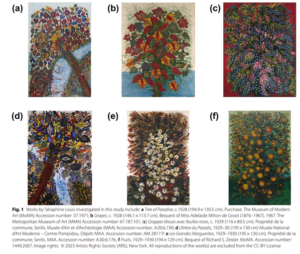
A Bright Future Ahead
Portable Spectral Services Announces Exciting Management Transition
It is widely known that portable XRF analysers are rarely used to analyse gold directly during exploration because the analysis area is large (up to 5 mm) and the limit of detection is too high. The established exploration method for Au mineralisation is to use a portable XRF instrument to identify pathfinder elements that can be used as vectors towards gold during exploration. But what if this process could be reversed? What if you could determine the appropriate pathfinder elements for vectoring towards gold mineralisation by analysing the gold itself? This is where the micro-XRF spectrometer comes in.
Micro X-ray Fluorescence spectroscopy is a rapid and non-destructive technique used to acquire quantitative chemical data at high spatial resolution (i.e. µm-scale). The spot size of the instrument is 25 µm, so if there is a 1 µm spot of gold, the concentration of gold is still above the detection limit and therefore shows up in the 25 µm spot (Fig. 1). This means you can create qualitative gold maps of samples with almost no sample preparation. You can then use the gold maps to identify the primary pathfinder elements associated with the gold – which can then be employed by portable XRF instruments being used in the fields

Figure 1: Gold-bearing vein, with banded silica and adularia (KAlSi3O8) from the Sado deposit, Japan, highlighting the association of Au with As, Zn and Ag. Image from Tharalson et al. (in press).
Additional questions can also be answered during this process. For example, is the gold structurally or spatially linked to the pathfinder elements? Where gold has been identified, the association between the gold and pathfinder elements can be easily extracted from the data. There may be a spatial correlation between pathfinder elements and a specific rock unit but the gold concentration within that rock unit may be sporadic. Therefore, the use of the micro-XRF can enable the specific pathfinder elements that are associated with the gold, not just the rock unit, to be identified. Small-scale textural and compositional features can also be identified, including those that may not be visibly discernible enabling geologists to delineate zonation, fluid flow and ultimately the paragenesis of a rock.
For more information on the micro-XRF visit https://www.microxrf.com.au or to have a sample scanned with a micro-XRF contact us via email at [email protected].
How else can micro-XRF help with exploration?
• Take the guess work out of mineral ID, including hard to identify minerals e.g. spodumene at the Pioneer Cade Deposit
• Quick screening tool to select thin section locations from exploration core
• Understand the mineral system quickly through targeted element mapping
• Spot analysis of mineral grains (e.g. sulphides, sulphates, phosphates, halides etc)
Highlights of micro-XRF analysis
• Non-destructive
• Minimal sample preparation required
• Various sample types e.g., drill core and chips, thin sections, liquids, pulps
• Quantitative and qualitative analysis
• Resolution down to 25 µm
• Detection limits down to ppm levels
• Large chamber size of 35 x 65 cm
References:
Tharalson, E.R., Monecke, T., Reynolds, T.J., Zeeck, L., Pfaff, K., Kelly, N.M. (in press). The distribution of precious metals in high-grade crustiform quartz veins from low-sulfidation epithermal deposits: Constraints from XRF mapping. Minerals.

Portable Spectral Services Announces Exciting Management Transition

Our tool introduces uXRF (micro-X-ray fluorescence) scanning technology to RC chip analysis, enabling rapid, non-destructive, and quantitative analysis of major, minor, and trace mineral phases.

Automated micro-X-ray fluorescence (micro XRF) technology emerges as a powerful tool to rapidly and accurately capture the mineralogy of rock chip, RC and AC samples.

Findings of an ongoing regional evaluation study over concealed Proterozoic lithologies known to host magmatic nickel sulphides with potential to host other base-metal, gold and rare earth elements (“REE”) systems within the Fraser Range, Western Australia.

Findings of an ongoing regional evaluation study over concealed Proterozoic lithologies known to host magmatic nickel sulphides with potential to host other base-metal, gold and rare earth elements (“REE”) systems within the Fraser Range, Western Australia.

Findings of an ongoing regional evaluation study over concealed Proterozoic lithologies known to host magmatic nickel sulphides with potential to host other base-metal, gold and rare earth elements (“REE”) systems within the Fraser Range, Western Australia.
